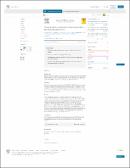| dc.description.abstract | Despite the known benefits of physical activity (PA) among people with anxiety, little is known about PA levels in people with anxiety at the population level. This study explored the global prevalence of anxiety and its association with PA.
Methods
Cross-sectional, community-based data from the World Health Survey was analyzed. Prevalence of anxiety was estimated for 237,964 individuals (47 countries). PA was categorized as low, moderate, and high based on the International Physical Activity Questionnaire (short form). The association between PA and anxiety was assessed by multivariable logistic regression.
Results
The overall global prevalence of anxiety was 11.4% (47 countries). Across 38 countries with available data on PA, 62.5%, 20.2%, and 17.3% of the sample engaged in high, moderate, and low levels of PA respectively. The prevalence of low physical activity in those with and without anxiety was 22.9% vs. 16.6% (p<0.001) (38 countries, n=184,920). In the pooled model adjusted for socio-demographics, depression, and country, individuals engaging in low PA (vs. high PA) had 1.32 (95% CI=1.17–1.47) times higher odds for anxiety than those with high PA. Female sex, older age, lower education and wealth, and depression were also associated with low PA. At the individual country level, there was a significant positive association between low PA and anxiety in 17 of the 38 countries.
Conclusion
Low PA levels are associated with increased prevalence of anxiety. There is a need for longitudinal research to establish the directionality of the relationships observed | en_US |

